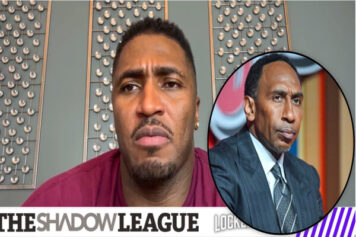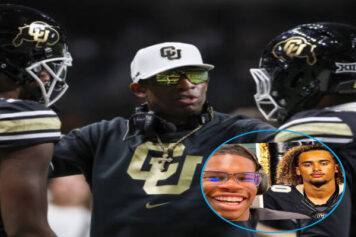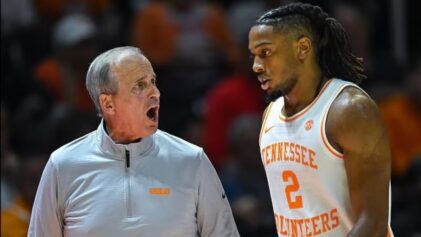You can blame the spankin’ new deal between the NBA and YouTube on Jeremy Lin and all of his friggin’ Linsanity. Ever since J-Lin rose like a phoenix from the ashes of the NBA’s Developmental League to become one of professional sports most polarizing and engaging Cinderella stories, the NBA has been searching high and low for the next Jeremy Lin. Players like Danny Green (Spurs), Gerald Green (Pacers), Chuck Hayes (Kings) and Lin have become the archetype, the blueprint—D-Leaguers cum laude that should have been better evaluated by scouts, coaches and GM’s before demotion, but made it to the big league anyway with another team. All told, there were 60 call-ups and 67 assignments last year from the league’s 16 teams. Right now, over 20 percent of players on NBA rosters have D-League experience. Subsequently, all of David Stern’s 30 teams are trolling the L’s official minor league for the next diamond in the rough and they think it’s a good idea that NBA fans subscribe to their YouTube channel to share in their quest.
“We’re really excited about our partnership with YouTube. Our research shows that over 11 million people in the United States consider themselves NBA D-League fans. We expect that number to increase significantly, not only because of the YouTube partnership, but because of the general growing awareness of the league and top prospects playing in it,” NBA D-League president Dan Reed told NBA TV. “It’s been a big push of ours to make it easier for fans to follow the great players in our league and follow their journey up to the NBA. As of this morning, there were 95 NBA players with experience playing in the NBA Development League. That includes the guy that everybody knows, Jeremy Lin, but there’s 94 other players that are just like him. They might not have been in the NBA if it weren’t for the chance to play in our league and get the great coaching and development and experience that our league provides and the platform that we provide to get back into the NBA. We expect that by the end of this year we’ll have 30% of NBA players having NBA D-League experience. We’ve never seen a crop of NBA prospects quite this talented in our league. About a third of the players in our league right now were in NBA training camps just a month ago.”
And so it begins. The NBA’s campaign to go viral. Last week, NBA Deputy Commissioner Adam Silver and Global Head of Sports for Google/YouTube Claude Ruibal announced that more than 350 NBA Development League games would be live-streamed during the 2012-13 regular season on the NBA D-League YouTube channel, via a YouTube video player on NBA.com and through the NBA D-League Center Court mobile app.
“The NBA’s latest initiative with YouTube marks another milestone in our partnership and a great way to tip off the 12th season of the NBA Development League,” said Silver. “By turning to our longtime partner, YouTube, we are able to bring the NBA D-League to basketball fans around the world, further expanding the league’s growth and showcasing future NBA stars.”
“As one of the world’s most popular sports with a broad roster of top prospects, the NBA D-League is a perfect fit for the YouTube platform,” added Ruibal. “With our broad global delivery across all platforms and devices, providing live and catch up NBA D-League games and highlights will make this exciting content easily accessible to a whole new generation of basketball fans.”
The fact that the D-League tipped off its 12th season on Black Friday made perfect sense. Bargain basement basketball on the most frugal day of the year? Feels right. There were four games on the dais for the night: Maine vs. Canton, Erie vs. Fort Wayne, Tulsa vs. Texas and Bakersfield vs. Rio Grande Valley.
"If a tree falls in a forest and no one is around to hear it, does it make a sound?"
For the first game between the Red Claws and the Charge, only 4,195 people tuned in. A measly 1,740 people tuned in to see the Bayhawks take on the Mad Ants and a mere 1,804 watched the 66ers take on the Legends. The main event, as it were, between the Jam and the Vipers brought in a whopping 13,173 views.
The paltry numbers suggest that either the NBA’s marketing campaign for its farm system has a lot more work to do or, more likely, NBA fanatics were spent from throwing elbows to clear a path in Wal-Mart aisles for video games and flat screens.
As for entertainment value, the broadcasts are a lot grainier than your HD telecasts on League Pass or NBATV. The color commentary wasn’t as on point as those one might find on cable with Jeff Van Gundy or Mike Breen calling the game. And if you missed that rim-rockin’ putback slam in the lane because you were stuffing your face with pizza, there’s no instant replay either. To put it bluntly, Dan Reed is selling the steak without the sizzle. And the crowd? Most of the people in the stands looked like acolytes of Al Bundy. It was as if everyone had gotten tickets to the game as part of a prize pack at the local Piggly Wiggly.
Still, just like day old cold pizza is still pizza, the D-League, while not as star-studded and kinetically charged as the NBA, is still basketball. There were high-level “prospects” on display. Former All-American Chris Douglas-Roberts, who leads the D-League in scoring with 30 ppg, lit up Tulsa for 31 points, five rebounds and three assists. Kris Joseph, fresh of his assignment from the Boston Celtics, dropped a game-high 28 points and eight rebounds on Canton, Donatas Montiejunas scored 31 points on Bakersfield and rookie Scott Machado, who was just called back up to the Houston Rockets after averaging 16 points and 8 dimes in two games, added 20 points.
“It was great,” Machado told the Houston Chronicle of the experience. “Something new. Something I had to get accustomed to. I made the best of it. I feel like going down there, since you haven’t played in games, you have to get the rust out. You try to get in game shape and try to develop so you can come back up here ready to play.”
Maybe this is the kind of practice Allen Iverson would have approved of. Real-time experience in real games against a real band of also-rans. But that’s just how things are now. Who knows? In a couple of years, NBA teams will accelerate the use of the league and find more value in sending their underplayed rooks to the minors for more on-court burn.
Additionally, the D-League broadcasts may become just as compelling and entertaining as the games shown on TNT with Charles Barkley and the rest of the ‘Inside the NBA’ crew providing the post-game wrap-up. The skeleton is there. No form of entertainment is gaining more amongst younger viewers than the Internets. There’s freedom in that. No bloated TV contracts or game blackouts due to cable coverage. All this fledgling league needs is more in-depth analysis, better camera angles, instant replays and tactical social media interaction with fans. Get the new generation of fan more involved in the proceedings. Feed their insatiable appetite for hoops and in five years, this league of developmental prospects and its online transmissions could be a real factor.



